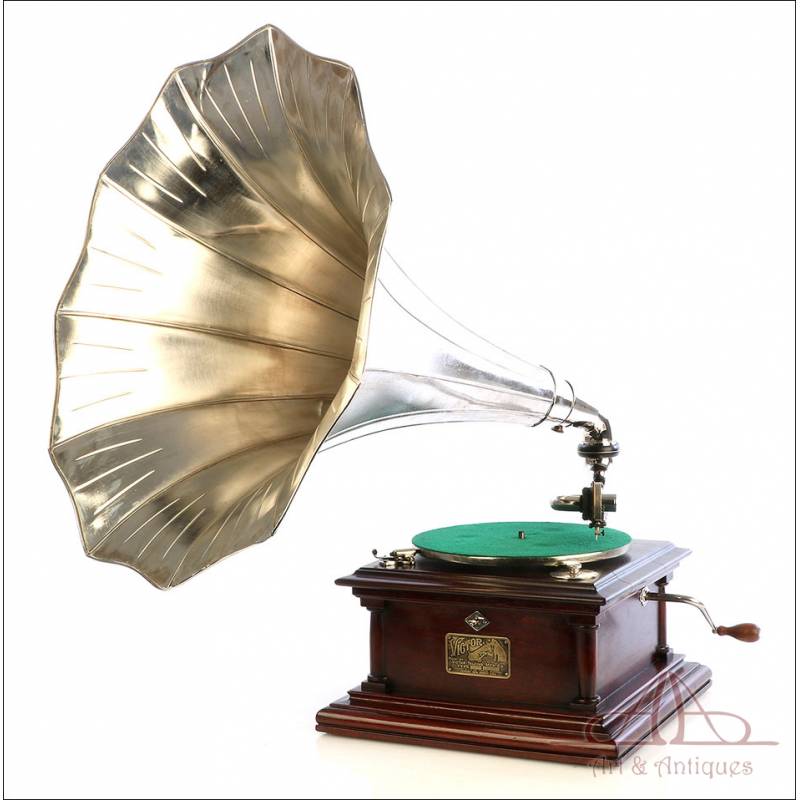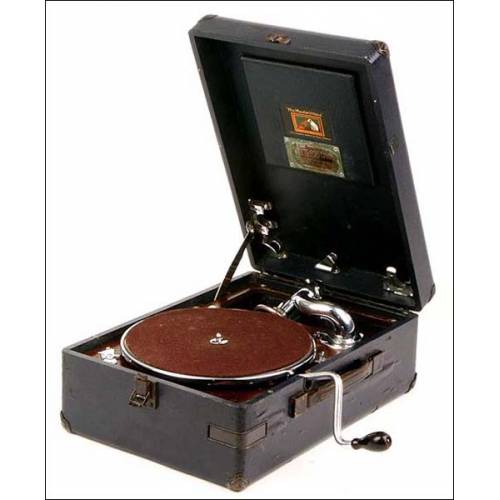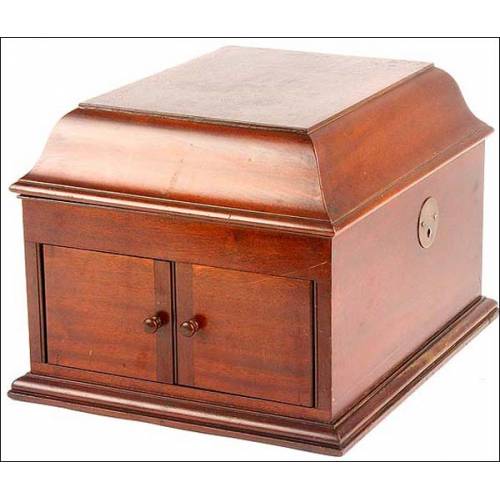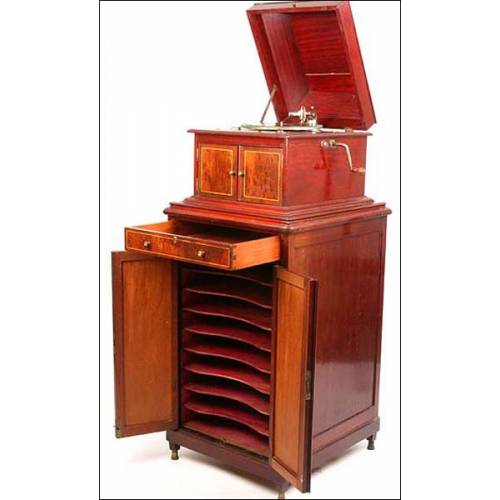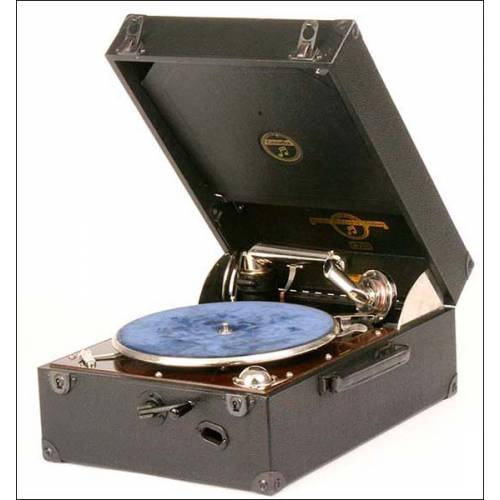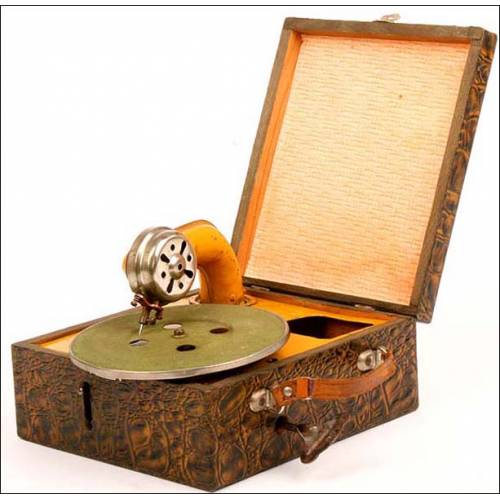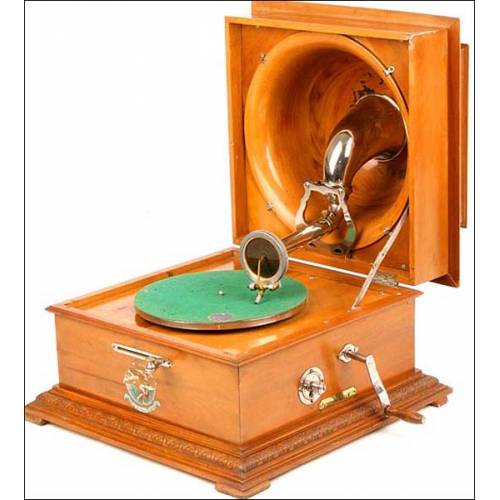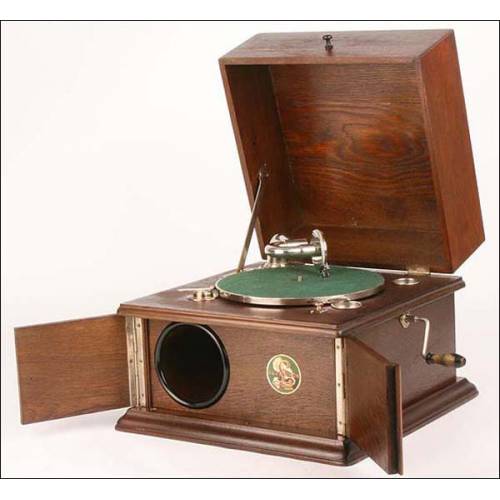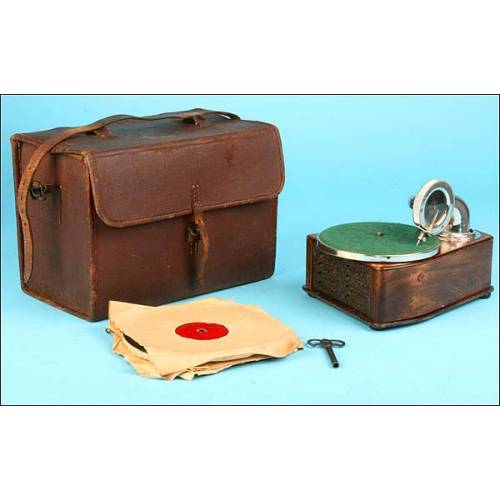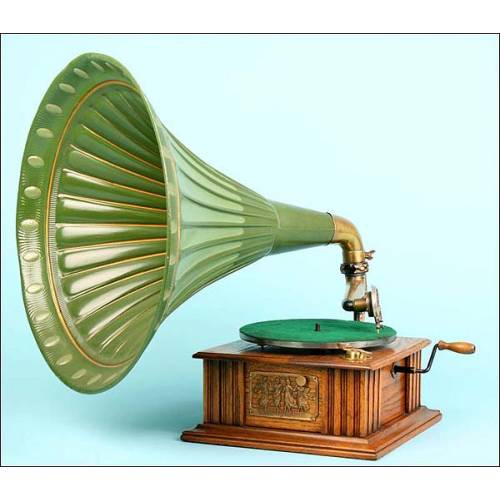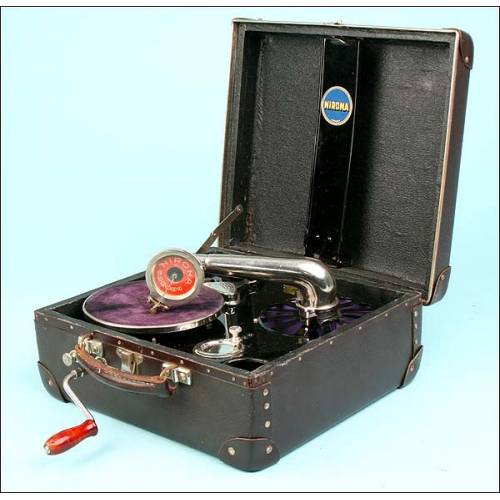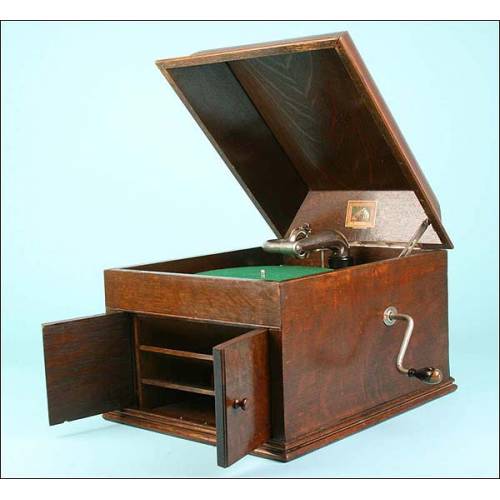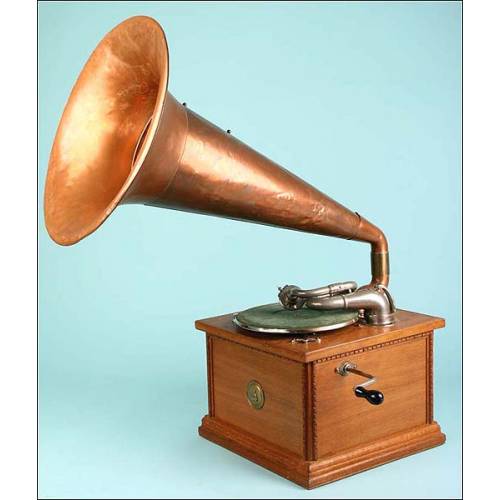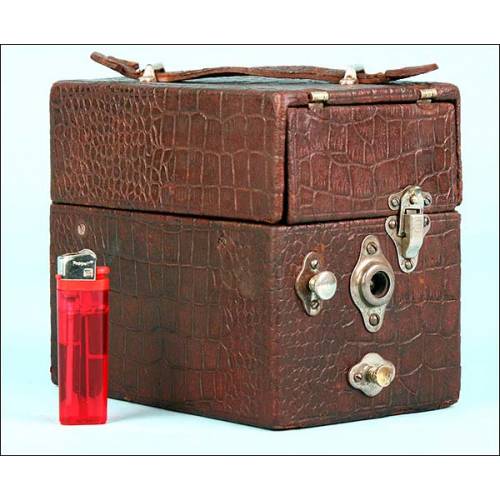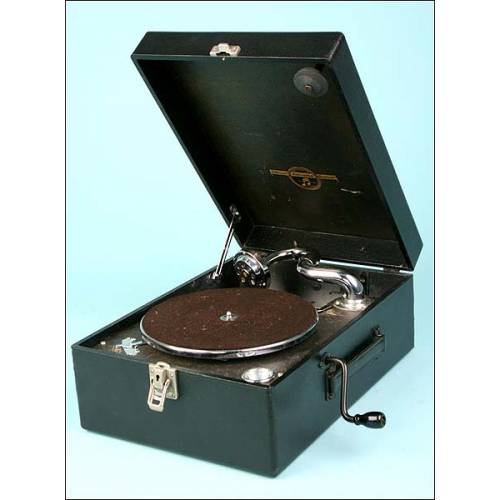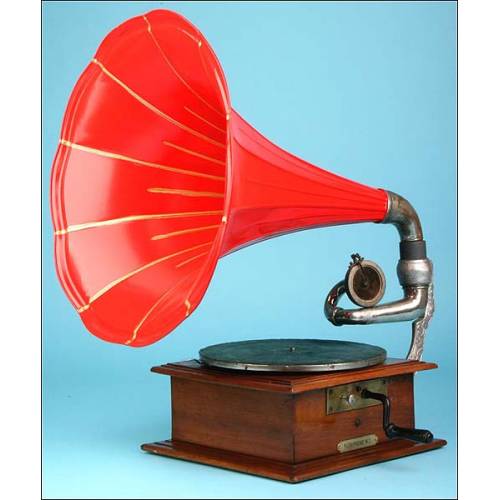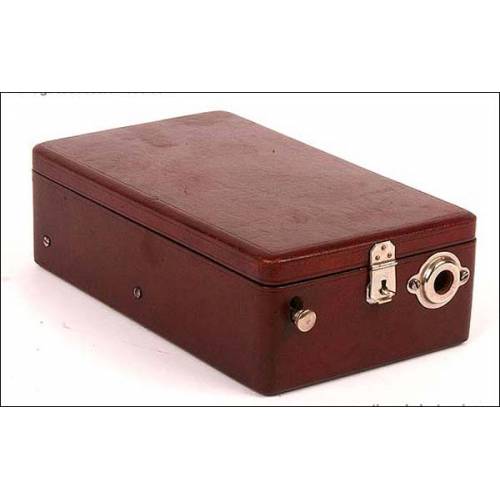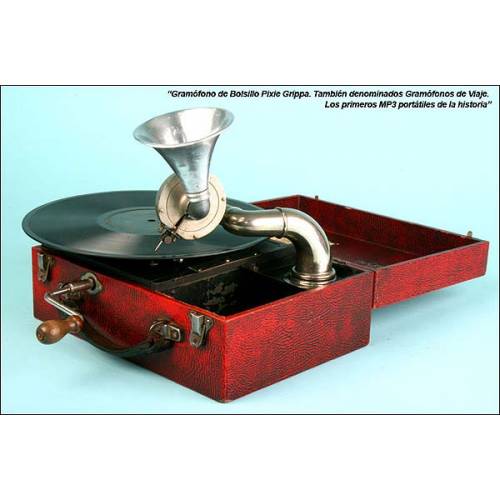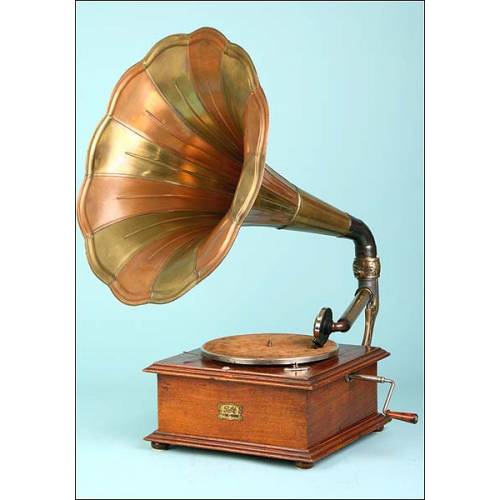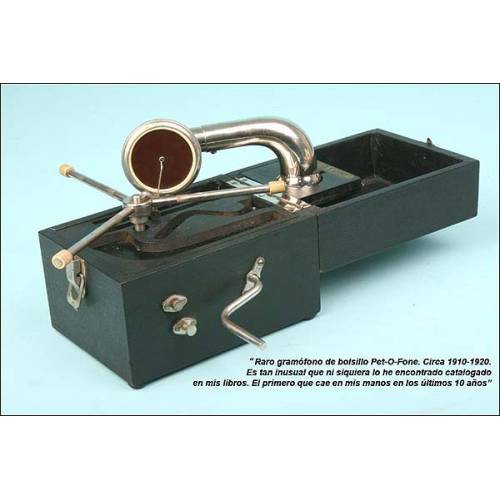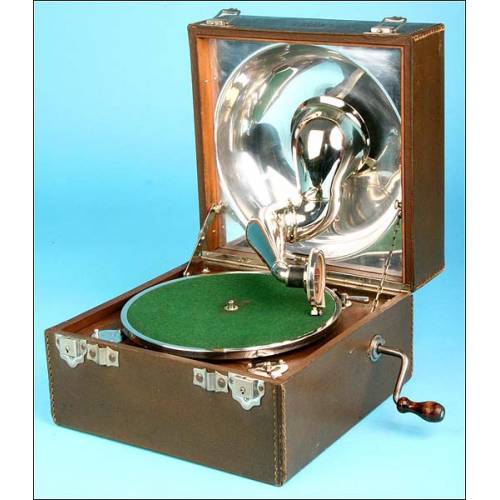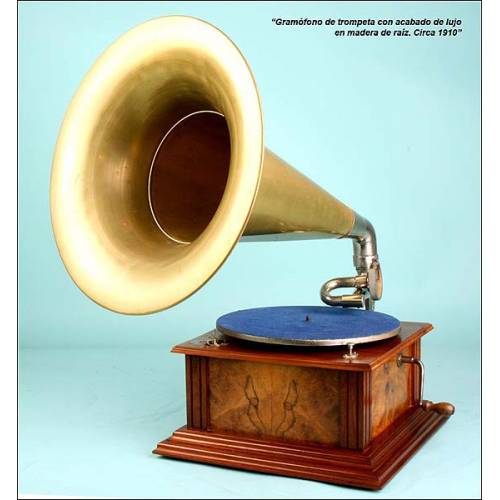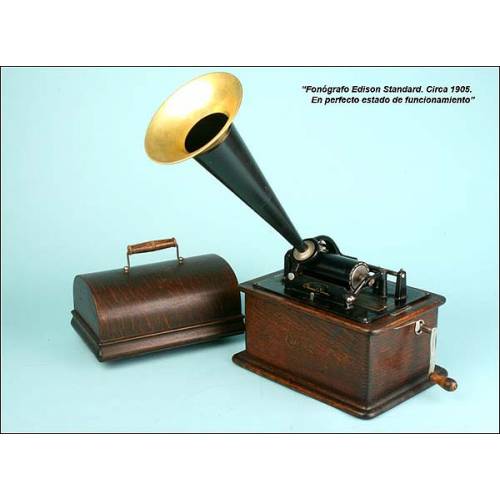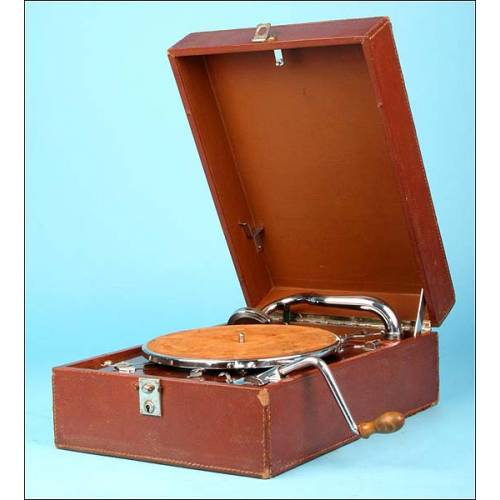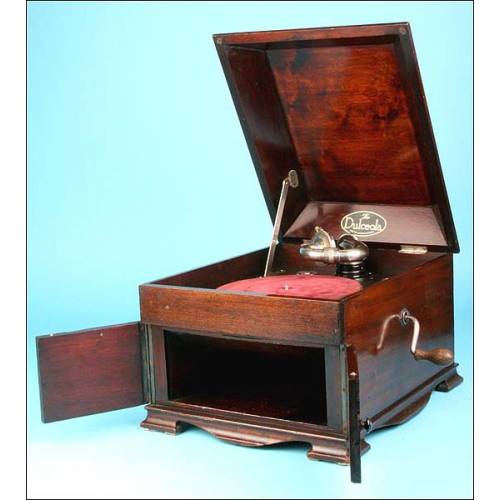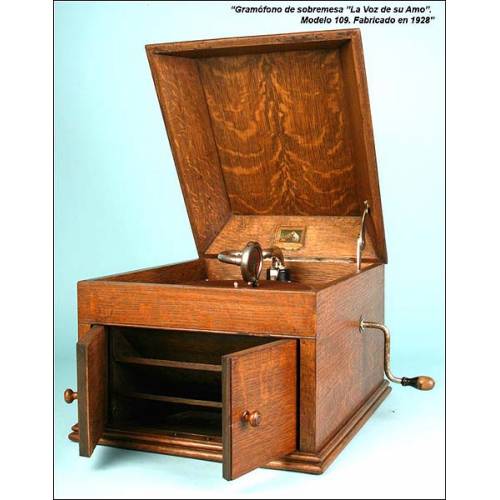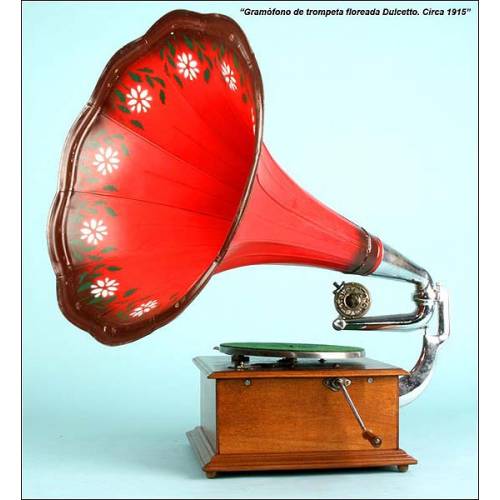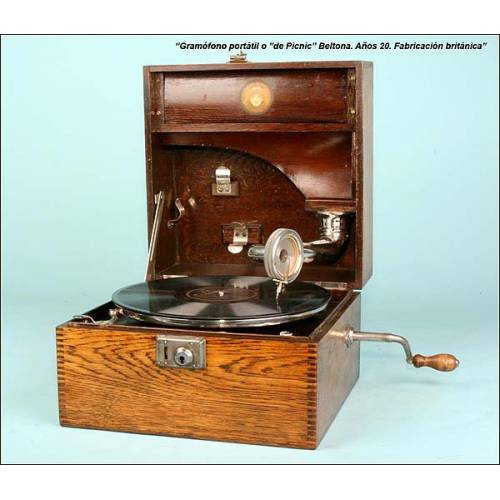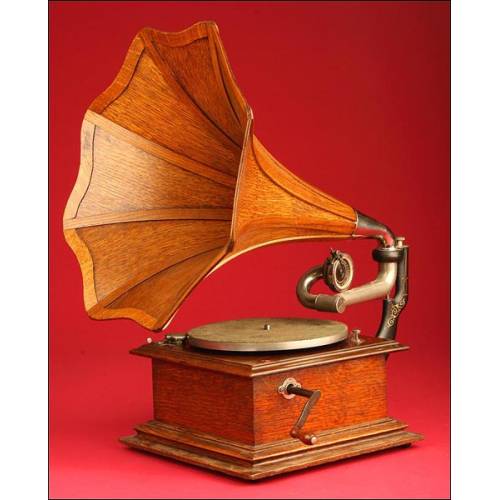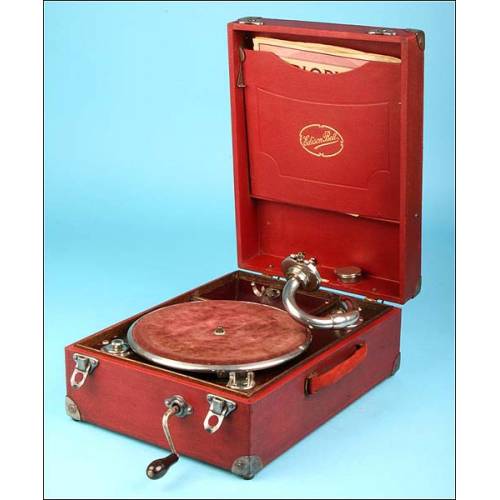D-468
Antique Victor IV Gramophone with Nickel-Plated Horn. USA, Circa 1915
Superb antique Victor IV gramophone in amazing condition. Professional restoration. Double-spring motor. In working order.
Sold!
Remarkable antique Victor IV gramophone or phonograph with nickel-plated horn, made in the USA circa 1915 and perfectly restored to its original condition. The gramophone looks gorgeous; its double-spring motor works fine and makes it possible to enjoy the vintage sound of old-time records with a good quality. The box is made of solid mahogany wood, with a fine dark color and a wonderful French-polish finish that provides it with a warm glow. It has milled top and base and carved corner pillars. At the front side we can see a riveted brass plate with the brand name VICTOR and the famous logo with a dog listening to a gramophone. The plate bears the engraved model, IV, and the serial number 33976. The horn, arm and reproducer set is connected to the box by a beautiful black-enameled iron elbow, embellished with gold and turquoise hand-painted filigrees. This decoration has been carefully restored and now it shines in all splendor. The reproducer is an EXHIBITION model, original from the time; although showing clear signs of wear, caused by the trace of time, it is in perfect working order. The arm and the horn are made of silvery metal; they have both been nickel-plated again in order to regain their great glow. The beautiful morning glory horn bears an engraved inscription: PAT AUG 2205. This antique Victor IV gramophone with nickel-plated horn is a one-of-a-kind item, as gorgeous as evocative. Dimensions: Box: 14 in / 35.5 cm. Height: 7.5 in / 19 cm. Horn: Length: 28.35 in / 72 cm. Mouths Width: 23.62 in / 60 cm.Victor Talking Machine Co. History The Victor Talking Machine Company was founded in 1902 by Eldridge Johson, owner of a small machine shop in New Jersey (USA) after the proposal made by Emile Berliner to produce a low-cost spring motor to build a phonograph for his records. In the late 1880s, Berliner had invented a flat phonograph record that could be mass-produced. At the same time Edison had designed the cylinder phonograph, but the cylinders could not be mass-produced. After a complicated series of patent infringements and lawsuits, Berliner was restricted from selling his products in the USA so he moved to Canada. It was then when the Victor Talking Machine Company was founded; it was the beginning of a history of success. In 1906 the company launched the Victrola, a gramophone hidden into a piece of furniture which become a real success. During World War I the business declined but sales rose again after the content. In 1925 they produced the Ortohponic Victrola with an improved quality sound. At the late 1920s Johnson sold the company to RCA and it was renamed RCA-Victor.

